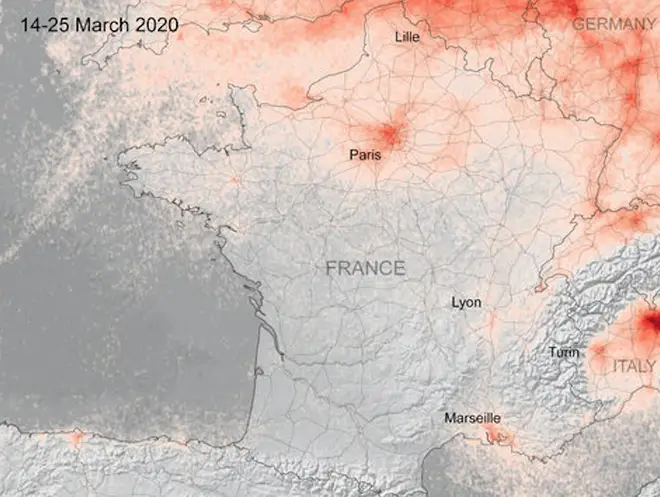
Henry Riley 4am - 7am
16 April 2020, 10:26

Coronavirus: nitrogen dioxide emissions drop over Italy
The coronavirus lockdown measures across Europe are not only stopping the spread of Covid-19 it also seems to be slowing the spread of pollution.
New images from European Union Copernicus satellites show continued low levels of nitrogen dioxide concentrations across Europe – coinciding with coronavirus lockdown measures.
The data shows some cities seeing levels of pollution fall by 45—50 per cent compared to the same period last year.
The new images show the nitrogen dioxide concentrations from 13 March until 13 April 2020, compared to the March-April averaged concentrations from 2019. Madrid, Milan and Rome saw decreases of around 45 per cent, while Paris saw a dramatic drop of 54 per cent – coinciding with the strict quarantine measures implemented across Europe.


Nitrogen dioxide is produced from power plants, vehicles and other industrial facilities and can have significant impacts on human health – increasing the likelihood of developing respiratory problems.
Henk Eskes, from the Royal Netherlands Meteorological Institute (KNMI), comments, “There are considerable variations of weather in every country from one day to the next, creating a large impact on the dispersion of nitrogen dioxide.
“Averaging data over longer periods of time allows us to see clearer changes in concentrations owing to human activity. For this reason, the maps show concentrations over a monthly period and are provided with an uncertainty of 15% which reflects weather variability not accounted for in the monthly averages used.”
As lockdown measures will continue in the following weeks, the KNMI team will continue to work on a more detailed analysis of other countries in northern Europe, where a larger variability in data owing to changing weather conditions is observed.
The Copernicus Sentinels are a fleet of dedicated EU-owned satellites, designed to deliver the wealth of data and imagery that are central to the European Union's Copernicus environmental programme.